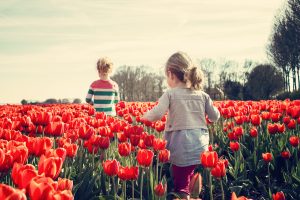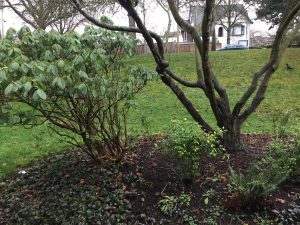Hello, welcome back!
Here is our LFS 350 Proposal: F2S_Proposal

WEEKLY OBJECTIVES AND ACHIEVEMENTS:
This Week’s Objectives:
| OBJECTIVES | Dates |
| Contact Sam Gambling from Farm to School to confirm the walk/tour to VanTech Elementary. | February 28 |
| Dissect and gather information from our audio, visual and written recordings with Lori Snyder on our Indigenous Foodscape scout. | March 2 |
| Interview at least one or two participants of the Intergenerational Landed Learning Project, a garden based interdisciplinary pilot, to help facilitate budget allocation . | March 5-10 |
| Follow up with the other F2S groups to present, discuss, and tweak suggestions. | March 5 |
Ongoing Objective:Keep in constant contact with one another through Facebook and email, at least twice this week. Reply to Sam Gambling and Lori Snyder in a timely and respectful manner. Doing so, would allow our group, as whole, to progress as a unified unit.
Achievements
As of February 28, 2017
 Completed the Project Proposal Report.
Completed the Project Proposal Report.- Working steadily on our in-board presentation/debrief with the two other F2S teams.
- Successfully arranged a tour of VanTech Elementary school with both Lori andSam.
- Prepared questions to pose Lori on-site with regards to Indigenous knowledge.
- Submit a brief synopsis of what we have been working on to the co-ordinator.
WHAT? SO WHAT? NOW WHAT?
What Feelings did it evoke in the student? Myself? Others?
On February 6th, we went to AR Lord to take part in a tour of the school site and document any information that may be used to help allocate future funding for the program. When we got to the school, we did a tour with Lori and she pointed out many indigenous plants that were already thriving at the site. She provided information on which plants the school should plant for the next season, gave information about these specific plants the teachers could pass onto students and and which existing plants needed pruning. The tour led to a gardening space, and we were surprised to see a large garden with 4 raised beds, a few planters, and a complete composting system.
 A significant moment for us was when we realized just how much things have changed since we were in elementary school ourselves. None of us had the opportunity to grow gardens and learn about indigenous foods while we were in the public school system, and now there are programs that incorporate learning about the food system in many schools across the province. Some of these include Farm to School BC, Breakfast Club of Canada, and the School Fruit and Vegetable Nutritional Program (Community Partners & Associations, n.d.). This realization evoked feelings of gratitude from acknowledging that programs such as the Farm to School program are being implemented, and we as a society are starting to realize the importance of learning and engaging about the food system that we are all a part of.
A significant moment for us was when we realized just how much things have changed since we were in elementary school ourselves. None of us had the opportunity to grow gardens and learn about indigenous foods while we were in the public school system, and now there are programs that incorporate learning about the food system in many schools across the province. Some of these include Farm to School BC, Breakfast Club of Canada, and the School Fruit and Vegetable Nutritional Program (Community Partners & Associations, n.d.). This realization evoked feelings of gratitude from acknowledging that programs such as the Farm to School program are being implemented, and we as a society are starting to realize the importance of learning and engaging about the food system that we are all a part of.
Attending the tour with Lori also helped us appreciate how many people and how much work actually goes into planning and implementing these kinds of programs, and how privileged we are in B.C. to have them available.
So what was going through my mind as I acted?
There is an expanding movement towards increasing awareness of the food system, and encouraging each individual to recognize their role in this system. As we continued the tour, it led us to ponder; why was this shift towards increasing awareness of the food system so significant?
- So students can feel a greater connection to their food and the history of food, and appreciate food more when they are consuming it
- By having this introduction to gardening at such a young age, we think it will help the students understand that each and every one of them are an important player in the food system. By gaining familiarity with stepping foot in the food system, as they grow older they may feel more inclined to take part in the food syst
 em in larger ways, such as making changes where they see a gap. For some it may not only an inclination, but even a passion to make changes in the food system for the better.
em in larger ways, such as making changes where they see a gap. For some it may not only an inclination, but even a passion to make changes in the food system for the better. - With programs like this, it encourages students to think about the food that is on their plate, and to think about the entire global food system. We are all part of the system, whether we are conscious of it or not.
- Students will gain a better understanding of food and it will help them be prepared to make informed decisions about their consumer choices when it comes to food.
- Mental health benefits of interacting with the earth, and an overall improved sense of well-being (Haubenhofer et al.2010).
Now What Might be the Consequence of this Action?
After realizing the expansion of integrating food knowledge into elementary schools, it makes us hopeful for the continued growth of food system awareness with younger generations. With the success of current nutritional programs, even more may be implemented across the nation.
This experience raised new questions about what other topic we can introduce in elementary schools programs. There are nutrition education and gardening, but some future possibilities for new programs that we thought of include food literacy, food history, and mindful eating.
Identifying upcoming objectives and strategies to achieve them.
Until now, two of our members have attended AR lord school tour and we also have another school tour on March 2nd. And it is the time we need to make a first draft to present to our community partners and get some feedback from them to find a best fit format and useful information for our final report. Here are our upcoming tasks as we move forward with our project:
Attend Van tech school with Lori and collect information of this school on March 2nd
 Recording audio during the tour and taking field observation include photos Creating current assets maps after the tour and focus on their garden.
Recording audio during the tour and taking field observation include photos Creating current assets maps after the tour and focus on their garden.- Asking questions about school’s plan about the project and how Lori responds to them
- Creating current assets maps after the tour and focus on their garden
Have a group meeting to analyze data and come up with a first draft report
- Creating a spreadsheet that clearly describe the current and needed plants and facilities for each school
- Transcribing the audio and highlight school’s plan of their garden
- Gathering plant/ facilities photos together on the current assets maps by using slideshow or other photo show software
Meeting with community partners and other groups to hear feedback
- Bring in a first draft report and explain to them what information and formatting we are going to use in the report
- Get feedback and suggestion from community partners and make some notes
- Learn about the final formation that decide by IF
- Editing draft into report considering the feedback
Preparing the final infographic and report
- Using Photoshop to create a poster that visually demonstrate our significance and findings of this community project
- Integrating the infographic, proposal and feedback/suggestion have been received, create a final report that including process and reflection
- Practice the presentation based on our poster
REFERENCES
Community Partners & Associations. (n.d.). Retrieved February 27, 2018, from http://healthyeatingatschool.ca/community-partners-and-associations
Haubenhofer, D. K., Elings, M., Hassink, J., & Hine, R. E. (2010). The development of green care in western european countries. Explore: The Journal of Science and Healing, 6(2), 106-111. doi:10.1016/j.explore.2009.12.002
